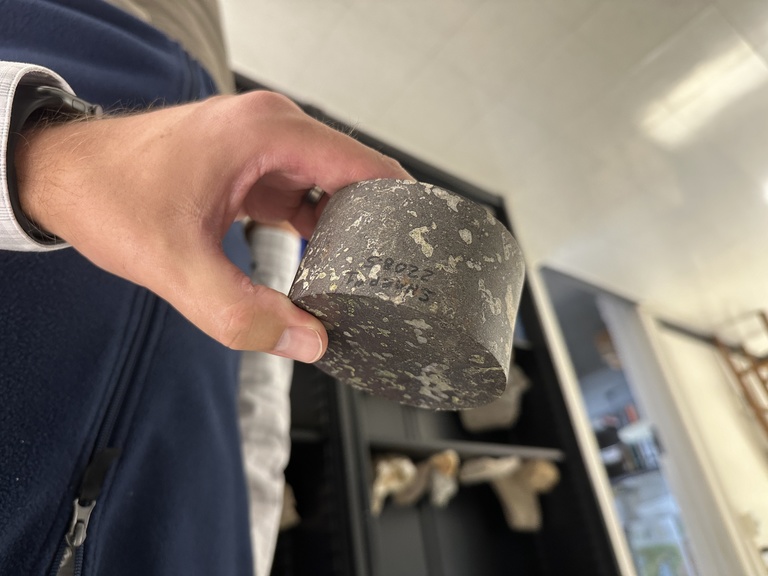
The University of Iowa has been selected to lead a two-year, $11.3 million Department of Energy study that could change how carbon dioxide emissions (CO2) are managed in Iowa, a potential win-win for the environment and energy producers.
Rather than transporting CO2 out of state via pipeline or other means, the study aims to prove it is feasible to inject and store CO2 deep under the earth’s surface in Iowa. This practice occurs elsewhere, but to date it has not been thought possible in Iowa.
Ground zero for the study is MidAmerican Energy’s Walter Scott, Jr. Energy Center, a coal-fired power plant in Council Bluffs. MidAmerican is a lead partner and will sponsor the bulk of the 20% cost share portion of the grant. The Department of Energy will be contributing $9 million.
“MidAmerican is pleased to assist the Iowa Geological Survey with this project," Peggi Allenback, MidAmerican senior vice president, generation, market operations and supply, said. "If the study succeeds, it could open the door for a new method to reduce carbon emissions.”
The power plant sits 2,700 feet – about a half mile – above a formation created 1.1 billion years ago when North America nearly split apart. The formation is known as the Midcontinent Rift System and is characterized by a long valley that was filled with lava. Over time, the lava turned into a 6-mile-thick complex of volcanic rock known as basalt.
Clark’s hypothesis is that supercritical CO2 (liquified CO2) could be injected into the basalt beneath the power plant where it would convert over time into calcite, a stable mineral found in limestone.
This method of CO2 storage, called geologic sequestration, is practiced widely, particularly in depleted oil and gas reservoirs, but it has not been tested with basalt.
“This basaltic mineralization method is very new,” Clark said. “Some states already understand their deep geology. Iowa doesn’t have that. That lack of information has led people to think you can’t do it in Iowa, so we are playing catch up.”
The project’s focus will be drilling a 5,000-foot-deep test hole on site to gather fundamental geologic data. The data will feed predictive models assessing what would happen when CO2 is injected and the storage capacity of the basalts.
If preliminary testing is positive, the next phase of feasibility testing would be to inject CO2, Clark said.
The grant is expected to support one undergraduate and one graduate student researcher at the UI for the project's duration.

